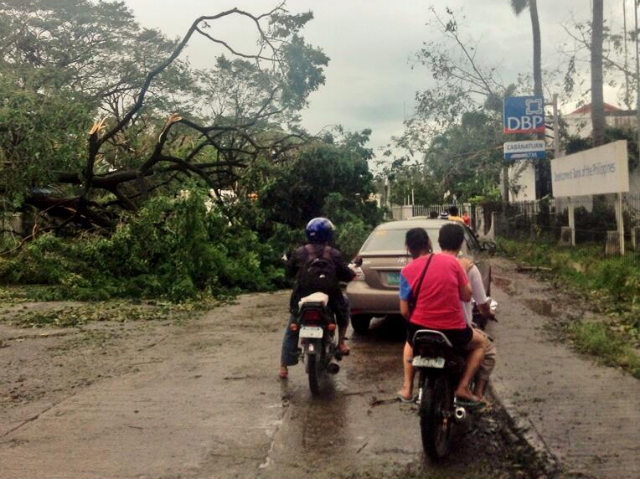SUMMARY
This is AI generated summarization, which may have errors. For context, always refer to the full article.

MANILA, Philippines – Typhoon Santi (international name: Nari) barrelled across northern Philippines early Saturday, October 12, uprooting trees, bringing down pylons and leaving more than a million people without electricity, officials said.
No casualties were reported, but a man was missing after he went to sleep in a small fishing boat moored on the country’s east coast where the cyclone made landfall during the night, disaster official Nigel Lontoc said.
“The typhoon toppled a lot of trees, and many of these are now blocking major highways,” Lontoc, assistant director for the civil defense office in the region, told AFP in a telephone interview.
“We have raw reports of many houses being unroofed by the strong winds,” he said, adding that local officials were still collating the data.
Nueva Ecija Governor Aurelio Umali told DZMM that it was strong winds, not flooding that visibly damaged the province as of Saturday, October 12. Uprooted trees and posts are blocking major roads, but clearing operations are underway.
Umali said over 15 hectares of rice fields have been damaged so far. No casualties have been reported in Nueva Ecija.
Santi sliced across the farming region at the center of the main Philippine island of Luzon before dawn Saturday and later blew out to the South China Sea with peak winds of 120 kilometers/hour, state weather bureau PAGASA said.
The typhoon also toppled power pylons, blacking out the province of Aurora on the east coast and about half of Tarlac and Zambales provinces, Lontoc said.
Damage
In an interview with DZMM, Dingalan mayor Zeny Padiernos said agriculture was mostly damaged in the town. A landslide nearly destroyed a house in the town, she said, but nobody was hurt. The local government has yet to decide if they will declare a state of calamity.
The areas now without electricity have a combined population of about 1.3 million, according to official population data.
About 3,000 people moved into government-run shelters before the typhoon struck amid warnings of flooding and landslides, Lontoc said.
He said road and utility crews were now busy clearing blocked roads, but that it could take up to two days to restore power to Aurora, where the typhoon had made landfall.
The typhoon spared the capital Manila, where the state weather service had warned on Friday about possible widespread flooding.
No major floods have been reported in the metropolis of more than 12 million people by early Saturday.
The Philippines is hit by about 20 major storms or typhoons each year that occur mainly between June and October. -with reports from Agence France-Presse, Rappler.com
Add a comment
How does this make you feel?
There are no comments yet. Add your comment to start the conversation.